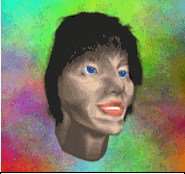



The goals of the VCC workshop are:
|
This workshop will bring both established and new researchers together to discuss the development, implementation and evaluation of VCC interface systems, the current VCC state-of-the-art and to create a vision for the future of VCC interface technology.
The origin of this workshop dates from a successful workshop on Talking Head Technology organised for the OZCHI 2001 conference. This was followed by a second held in Bruxelles in 2001 on the Virtual Human Markup Language - an XML based language for directing Virtual Humans and giving them emotions/gestures. A third workshop is to follow in Bologna in mid 2002 on Embodied conversational agents - let's specify and evaluate them! for AAMAS 2002.
The Workshop Organisers would welcome the submission of papers on substantial, original, and unpublished research on all aspects from the Major Topic areas. These include (but are not limited to)
|
The full day workshop will feature a mix of paper presentations, demonstrations, and discussion rounds. The presentations should cover one of the several academic or industrial themes of the workshop and should be oriented toward:
|
We especially invite papers/presentations/demonstrations of industrial VCC research and/or commercial VCC systems.
We strongly encourage you to demonstrate your work and to provide URLs to permanent web sites that contain examples of your system. To give us time to organize the technical requirements, if you are to demonstrate your system, we must be notified before YYY. Contact us for details at: raytrace@vhml.org
The workshop will conclude with a panel discussion of:
|
At the end of the workshop, participants should have a broad understanding of the differing technologies involved in the production, development and directing of VCC interface systems and applications. They will have seen several VCC systems and will understand the problems associated with the technology. They will have contributed, through discussion, to the future development of VCC interfaces within the global context. They will also become part of a network of VCC researchers and practitioners.
IMPORTANT DATES
| YYY - Deadline for paper submission |
| YYY - Notification of Acceptance / Rejection |
| YYY - Deadline for Web-ready paper |
| 29th November - Workshop |
SUBMISSION FORMAT AND PROCEDURE
Paper length should be 2-4 pages long (using 10pt, single space, all margins of 2cm) and should be accompanied as much as possible with URL's showing multimedia content (actual systems, screenshots, animations, conversation transcripts, speech output, any additional documentation etc) relevant to the work presented. Papers must be written in English.
The first page of your submission should include:
|
A MS Word template is provided here. The file HF2002_vcc.doc is an example of how the submission should look as is HF2002_vcc.pdf.
Every paper submitted will be reviewed by at least 2 reviewers from the Program Committee.
Submissions of no more than 4 pages should be emailed to Andrew Marriott ( raytrace@vhml.org) in PS, PDF or Word format only by YYY.
CONTACT PERSON
| Andrew Marriott | Web : http://www.computing.edu.au/~raytrace |
| School of Computing | Email: raytrace@vhml.org |
| Curtin University of Technology | Tele : 618 9266 7675 |
| Hayman Rd, Bentley 6102 | Fax : 618 9266 2819 |
| Western Australia |